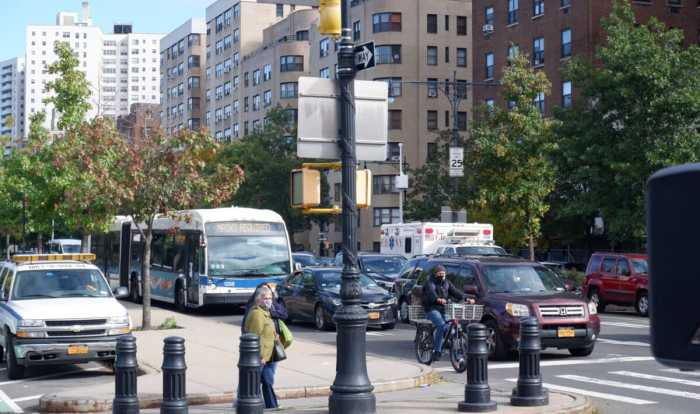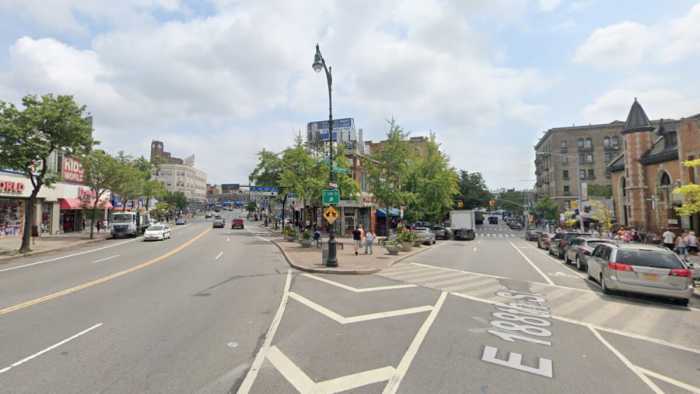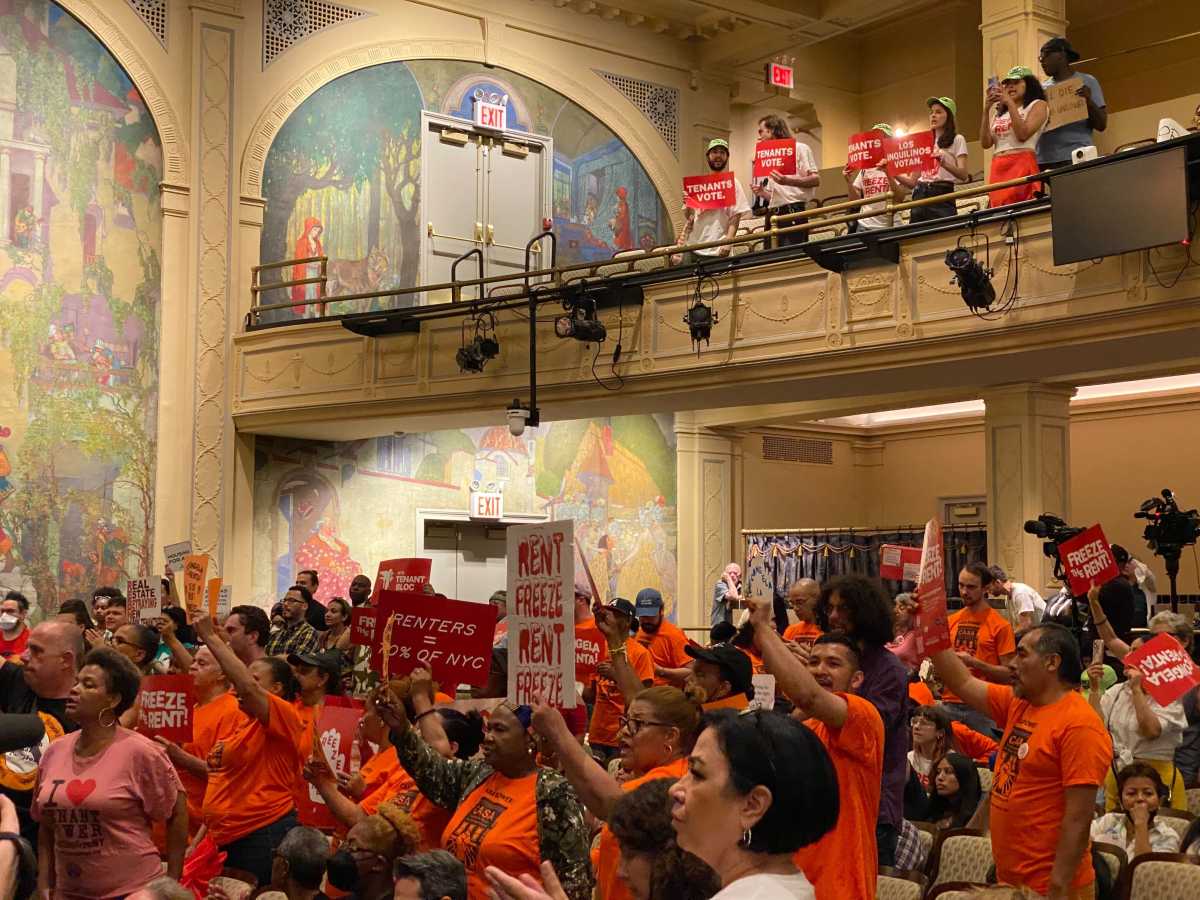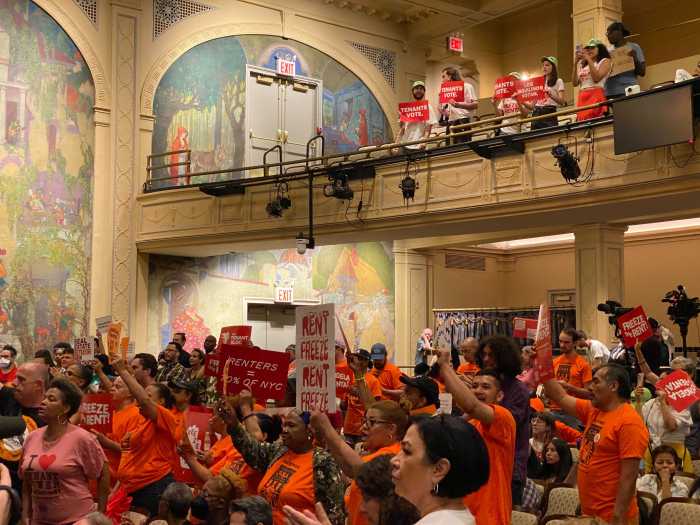“This story was originally published on May 29 by THE CITY. Sign up here to get the latest stories from THE CITY delivered to you each morning.”
Two days after THE CITY highlighted the plight of a man injured so badly by city correction officers he was put on a ventilator, a federal monitor overseeing the troubled department slammed jail officials for suppressing information about the incident and four others.
The damning special report by federal monitor Steve Martin filed on Friday called into question Correction Commissioner Louis Molina’s ability to reform the beleaguered department.
Martin said the five “serious and disturbing incidents involving harm to incarcerated persons” over the past two weeks “raise profound uncertainties and significant questions about whether the commissioner and agency officials are capable of managing such serious incidents.”
Martin also disputed whether Molina and his team “have the requisite objectivity and transparency necessary to address such incidents and advance the reforms.”
The federal monitor and his team, who have been in place since 2015, said they learned about the violent encounters behind bars via “allegations made by credible external sources or media reports.”
The special report revealed that James Carlton, 40, who was taken down by officers on May 11, “has since undergone three surgeries and … is now paralyzed from the neck down.”
Responding to the report, the Legal Aid Society and other lawyers representing plaintiffs in the case Nunez v. City of New York that led to the monitor’s appointment said Martin’s findings show that Department of Correction leaders have been unable or unwilling to take the actions necessary to dismantle the culture of brutality and incompetence in the jails.
The attorneys, who also include Debra Greenberger and others from the firm Emery Celli Brinckerhoff Abady Ward & Maazel, once again urged the judge overseeing the case to appoint a receiver to take over the department.
“The commissioner’s apparent view that the monitor’s concerns are not significant makes clear why the authority to implement reforms should be taken out of the city’s hands and placed with an actor that appreciates the gravity of the situation and will make appropriate decisions,” they said in a letter Friday to Laura Taylor Swain, the chief judge for the U.S. District Court for the Southern District of New York.
They also asked Swain to schedule a “special conference” to “address the horrific facts described in the Monitor’s Special Report.”
After the report’s release, Molina, in a statement issued by his press office, defended his record as commissioner over the last 18 months, saying that his administration has “dramatically reduced violence, eliminated rampant absenteeism, improved critical aspects of our training, infused outside correctional expertise into our ranks, significantly improved court production, and made Rikers Island safer for every person in our custody and every single officer.”
That statement did not address Martin’s criticism of the department’s handling of the five incidents or the time it took for Molina and his staff to provide his office with internal reports about them.
Blocked view
Martin’s 21-page special report leads off with an account of the case of Carlton, who was at the Vernon C. Bain Center when a team of captains and officers took him “down to the floor,” officers’ records obtained by THE CITY show.
He was being escorted by an officer when he balked at an order to exit an elevator inside the five-story floating house of detention on a barge in the East River, according to the Department of Corrections’ initial report of the incident.
When another officer came into the elevator, Carlton pushed his way past that guard, ran down a corridor, and pulled the main gate open, the report reads.
That’s when a team of captains and officers took him to the ground, then put him on a gurney and brought him to the clinic area, according to paperwork filed by the officers after the “use of force” incident.
Martin’s special report revealed new details about what happened afterwards — and how officers attempted to cover up the incident.
While Carlton was on the ground, the video of what all the officers were doing was partially blocked “due to the placement of staff,” the monitor’s report said.
A specialized “probe team” then came to the area, put him on a gurney, and transported him to intake. That’s the area where new detainees are supposed to be processed — but correction officers have used those spots as a place of punishment, where some behind bars have languished for days.
Carlton “was observed with blood on his face,” according to Martin’s report.
He was then taken off the gurney and walked to a search area where he was checked, the monitor said.
After the search, hand-held video showed that the officer moved him to the front of the room, according to the special report. Carlton stood up as officers tried to help him put on his shoes — a task difficult to do alone while he was rear-cuffed and in leg shackles, the Martin report said.
Carlton’s leg “jerked towards what appeared to be the helmet of one of the staff members assisting him with his shoes,” the report said. “Multiple staff then took the individual to the floor.”
He was unable to break the fall because of the restraints, the report notes.
Once again, part of the takedown wasn’t captured on camera “due to staff positioning and a partition in the search area,” according to records obtained by the federal monitor.
But Carlton “can be heard making a pained noise” and when the camera focused back on him he was “he was face-down on the floor with his head near a metal bench and staffs’ hands on his arms and back,” Martin said.
“While the probe team lifted and lowered the individual, his head hit a plastic container, the partition’s leg, and then the cement floor,” the special report said. “Spots of blood were also visible on the floor below the bench and next to the partition where the person in custody’s head was resting on the floor.”
He was then taken to Lincoln Hospital, in The Bronx, where doctors put him on a respirator, according to jail sources.
The initial Correction Department report detailed a takedown but did not indicate he was taken to the hospital, according to Martin’s review.
Martin said his team was first notified about what happened on May 24 when they got “an external allegation” about the improper use of force.
The so-called “monitoring team” then asked Molina and his executive team for additional information about what happened.
They got no information until THE CITY outlined some basic information about the incident later that day. Jail officials then gave the monitoring team a preliminary copy of the investigation and two summaries of Carlton’s medical history noting he suffered from spinal stenosis.
They said Carlton’s pre-existing condition was exacerbated when “he fell trying to tie or put on his shoes,” according to the special report.
Martin and his team questioned that narrative.
“The basis for the department’s claim is unknown and its veracity and accuracy are questionable at best given the evidence uncovered in the Department’s own investigation of the incident and the available video evidence of the use of force incident preceding the individual’s injuries,” the Special Report said.
Before the confrontation with officers, Dean Vigliano, Carlton’s lawyer, had asked the court to conduct a mental health evaluation, known as a “730,” court records show. The results from the review conducted earlier this month have not been released yet.
He’d been in jail for the past six months on robbery and assault charges following an arrest on Nov. 7. He was remanded without bail, court records show.
The Martin report also cited the death of Rubu Zhao, 52, after he jumped from an upper tier of a specialized unit on Rikers for people with mental illness on May 14. Jail officials waited 33 hours before recording the incident in the department’s so-called 24-hour report, according to the Martin account.
Molina told the monitoring team that he’s not legally required to report in-custody deaths to the monitoring team, according to the report.
“Such an assertion is inaccurate,” said Martin, citing prior court orders in the case.
The report also highlighted how a detainee was left naked and alone in a cell after he was beaten by other incarcerated people inside a crowded new admission pen in the Eric M. Taylor Center on Rikers on May 17. The detainee was later taken to a hospital where he “required intubation” and suffered from internal bleeding, multiple rib fractures, and a ruptured spleen, which required emergency surgery, the report said.
In another case, a detainee in his early 30s complained to correction officers of a headache, according to the report. But his condition took a turn for the worse and is currently on life support and is “not likely to survive,” the report said, noting the monitoring team was never told about the case.
The detainee was compassionately released, the report said.
The report also details a violent encounter officers had with a detainee over 80 years old with “possible cognitive impairment, serious underlying health issues and limited English proficiency” inside the Eric M. Taylor Center new-admission area on May 20. The person required hospitalization the next day, according to the report.
‘Imminent risk’
Martin, a corrections consultant from Austin, Texas, was appointed federal monitor in the summer of 2015 as part of a sweeping settlement tied to a class-action suit by a group of city inmates who alleged abuses by officers that included excessive solitary confinement and beatings.
Then-Manhattan U.S. Attorney Preet Bharara later joined the so-called Nuñez case, named after the lead defendant, citing a “deep-seated culture of violence” against teen inmates at Rikers Island.
So far, Martin has issued 13 quarterly reports primarily detailing how violence has steadily gotten worse since he was appointed. The reports have also highlighted how the Department of Correction has failed to revamp its internal investigations unit and allowed hundreds of allegations of abuse to simply expire after they failed to meet strict timelines based on union collective bargaining agreements.
The Martin court filing right before Memorial Day weekend was the second special report his team has published. Last March, they sounded the alarm in a similar report, ordering the Department of Correction to come up with a new comprehensive reform plan.
“There is significant cause for concern about the imminent risk of harm to people in custody and concomitant practice failures by the department,” Martin wrote in the special report. “Not only are the incidents summarized above disturbing because of the unsafe practices utilized and severity of physical harm — including death — involved, but they also cast serious doubt on the department’s compliance with a basic tenet of reform, which is to accurately record incidents so that underlying problems can be identified and resolved.”
After the release of the special report, Public Advocate Jumaane Williams renewed his call for Swain, the federal judge overseeing the case, to appoint a receiver to take over the department.
“It is clear that when it comes to protecting people on both sides of the bars and correcting the crisis conditions on Rikers, after over a year of purported reforms, this administration has earned neither the trust nor the confidence it shows in this area,” he said in a statement.





















